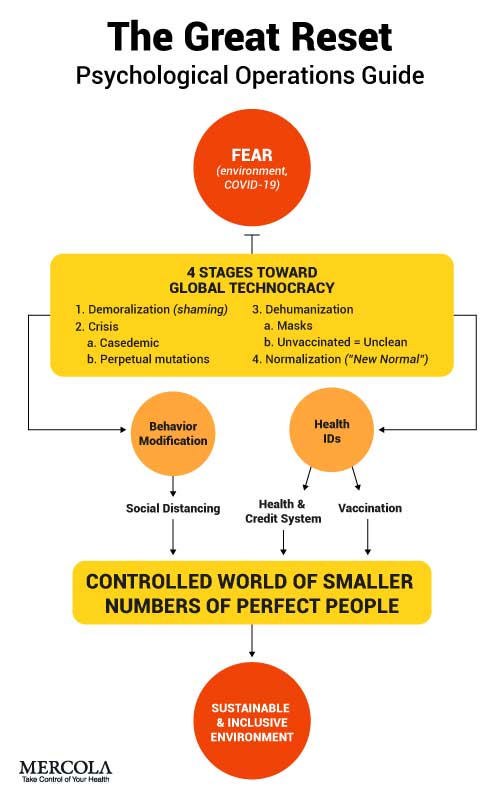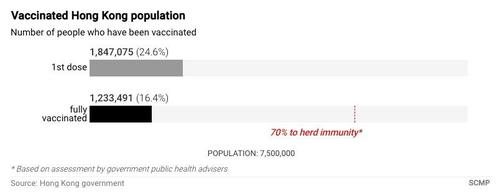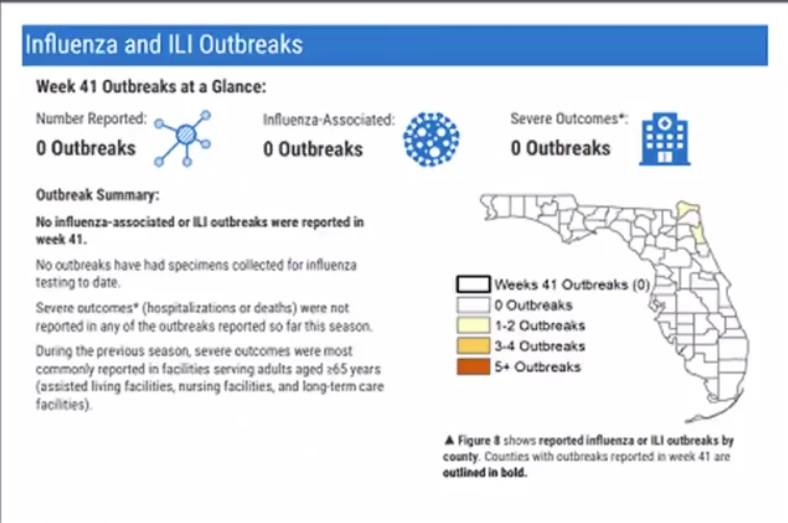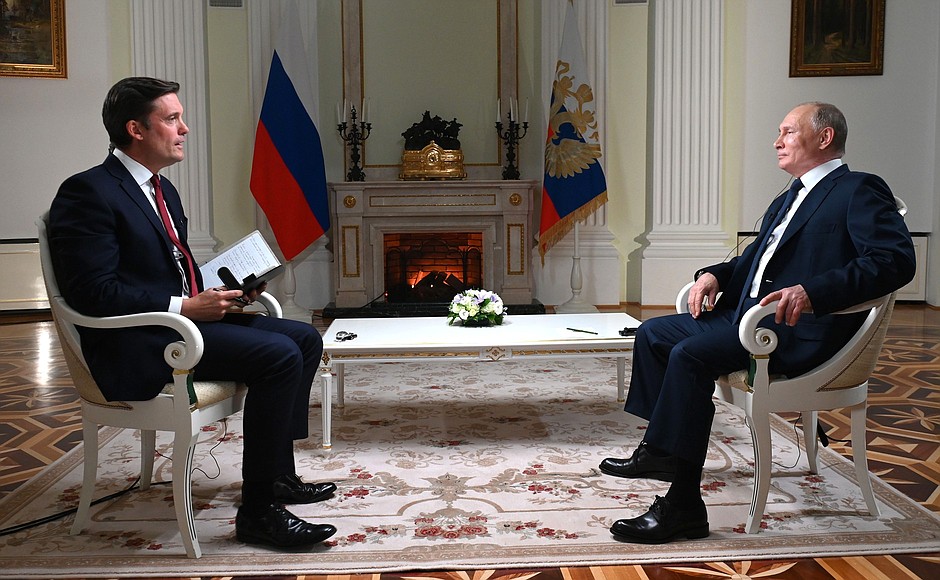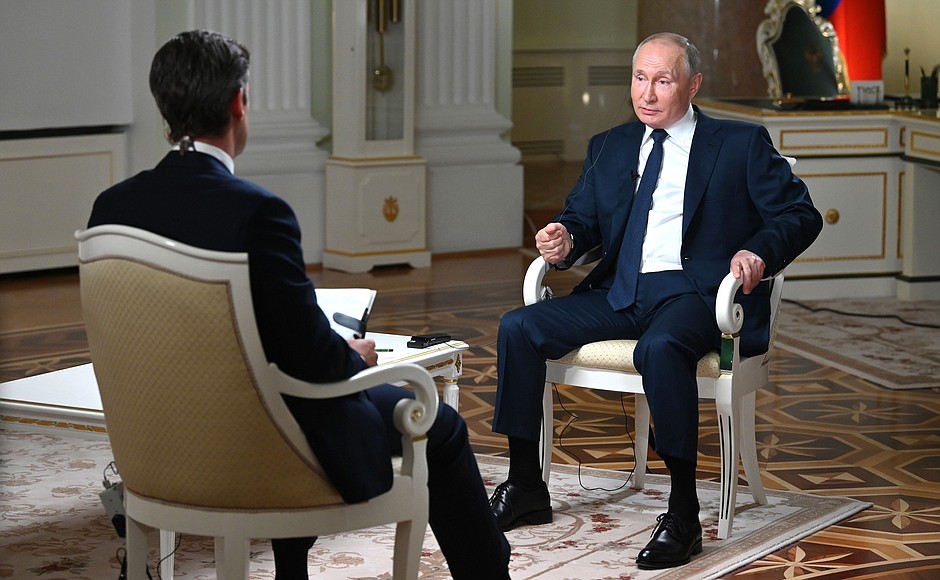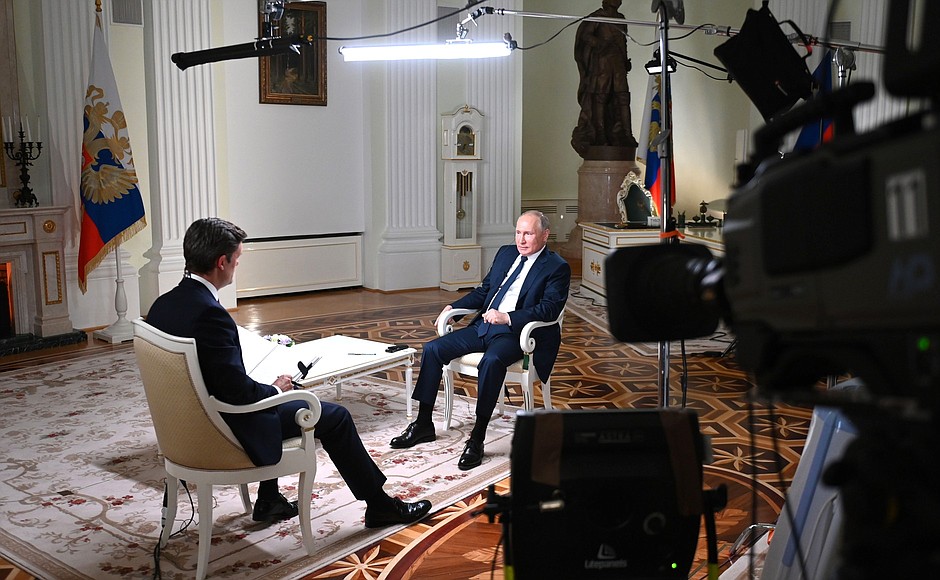Global War on Humanity: America’s Unceasing Pursuit of Hegemony
June 19th, 2021 by Prof Michel Chossudovsky
First published on December 29, 2019
Global Research, and the Global Research News Hour radio program operate on a shoestring. This holiday period, please consider a one time or monthly donation. Go to Global Research’s main donation page and tag your gift ‘GRNH.’
“Essentially what we’re looking at is a broader perspective of how the United States de facto supported Nazi Germany with a view to destroying the Soviet Union, as well as weakening the British Empire and competing empires including of course France, Belgium, Holland, etc. and again those countries virtually are no longer colonial powers.” – Professor Michel Chossudovsky (from this week’s interview).
LISTEN TO THE SHOW
Click to download the audio (MP3 format)
America was born out of a revolt against British imperial rule.
In the 18th and 19th centuries, the British Empire was “the hated enemy”. In 1812, the young republic declared war on Great Britain and tried unsuccessfully, to conquer the Canadian colonies.
Within less than a half century of its birth, the United States of America under President James Monroe, established a policy that came to be known as the Monroe Doctrine, which asserted that the USA would oppose any further colonization in the Americas (Western Hemisphere) by European powers. By establishing a sphere of influence outside its borders, the new republic was arguably taking its first steps in the direction of becoming an imperial power. [1]
Subsequent decades saw the U.S. continue to grow in geographic size, economic power and geopolitical influence. By the mid-twentieth century, the U.S. had become a significant military and economic player, and after World War II, the U.S. was to overtake all the European powers as the dominant force on the world stage.
A popular conception is that the United States is a democratic country devoted to the principles of the Founding Fathers and tasked with the responsibility of bringing freedom and democracy to the world. A less naive viewpoint might hold that governments corrupted by greed and the influence of big money have redirected the country’s foreign policy away from these high ideals toward whatever might benefit entrenched wealthy interests.
The notion that America’s military expansion might be guided by imperial rivalries with European powers is not immediately evident. Certainly, while menacing gestures and indignant statements toward nations like China or Russia or the so-called rogue or failed states like North Korea and Iraq may be common-place, U.S. leadership over the last century has typically exhibited a congenial attitude toward its counterparts in Europe.
In a recent paper by Professor Michel Chossudovsky (presented at the National Autonomous University of Nicaragua (UNAN)) focussing on documentary record of both world wars, the interwar period, the Cold War and the post Cold War period, America has continued to adopt an adversarial attitude toward Great Britain.
In fact, the paper, published in Spanish as La globalizacion de la guerra: Cronología de la “Guerra Larga” de EE.UU. contra la Humanidad, exposes, among other aspects, U.S. support for Nazi Germany, a 1920-39 approved plan to invade Canada, and plans to wage a nuclear war against 66 Soviet cities in the immediate wake of World War II at a time when the two countries were allies.
In a feature length interview, Professor Chossudovsky elaborates on his thesis, placing world events spanning the last century, including the recent Brexit drama in the United Kingdom, in that context.
Professor Michel Chossudovsky is an award-winning author, Professor of Economics (emeritus) at the University of Ottawa, Founder and Director of the Centre for Research on Globalization (CRG), Montreal, and Editor of Global Research. He has served as economic adviser to governments of developing countries and has acted as a consultant for several international organizations. His books include The Globalization of Poverty and The New World Order (2003), America’s “War on Terrorism” (2005), and The Globalization of War, America’s Long War against Humanity (2015). In 2014, he was awarded the Gold Medal for Merit of the Republic of Serbia for his writings on NATO’s war of aggression against Yugoslavia.
(Global Research News Hour Episode 281)
LISTEN TO THE SHOW
Click to download the audio (MP3 format)
Transcript- Interview with Professor Michel Chossudovsky, Dec. 19, 2019
The transcript has been edited by Prof Chossudovsky. Text boxes, maps added.
Part One
Global Research: You presented your paper in Nicaragua at the beginning of December 2019. Could you briefly introduce that paper to us?
Michel Chossudovsky: Well, the focus essentially was on the globalization of war and the chronology of U.S. hegemony.
The (“accepted scholarly”) history of the last hundred years is misleading because it presents Britain and the United States as allies, but in fact, they were never allies. They were competing Empires.
This confrontation between the United States and Britain has existed right from the onset of the founding of the United States in 1776. It became increasingly pervasive in the wake of the Civil War, 1865.
There were US military scenarios and war plans directed against the British Empire. These were not limited to the Western Hemisphere.
In essence, the objective of the United States was to weaken the British Empire and acquire a dominant position Worldwide.
There’s a lot of history, and I want to point to some important landmarks.
The Berlin Conference of 1884 – 1885, which was essentially a French and British initiative, the United States was excluded. They were there as observers, but they were never offered any role to play in “the carving up of Africa”, so that in effect, the European powers had already decided on the carving up of Africa without the United States.
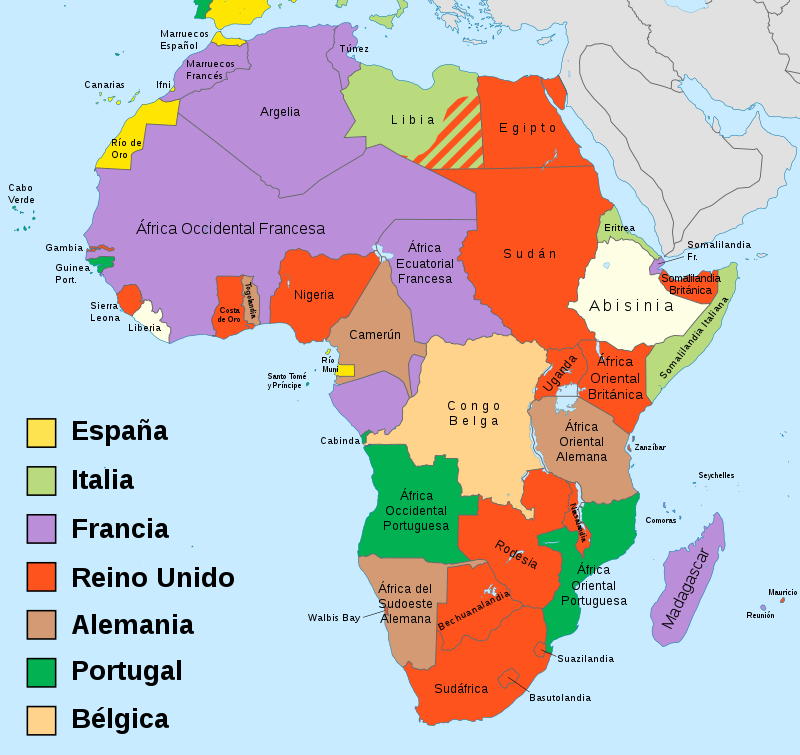
1914 Map of Africa
Then you have the Spanish-American war of 1898, and then the First World War (1914-1918), and what we can say is that the United States consolidated its hegemony in relation to the British Empire specifically in Latin America and the Caribbean but also in Asia.
And although the Monroe Doctrine was not “officially” directed against the British Empire, it was nonetheless intent upon consolidating US hegemony in the Western Hemisphere.
GR: Professor Chossudovsky, could you remind us briefly what exactly is the Monroe Doctrine and when it came about?
MC: Well, the Monroe Doctrine was initiated in the early 19th century, and it went through several phases. But ultimately, the concept was that European powers should not intervene in the Western hemisphere. It was directed largely against Spain and France but also Britain. And as we know France was also involved in Mexico at one point in its history (1862)
In other words, the Monroe doctrine laid the groundwork for hemispheric consolidation by the United States.
Now, what’s very important, particularly for Canadians, – because we have a particular way of understanding our history from 1867 onwards – is the fact that the United States had a plan to annex Canada, that was formulated in 1866.
M.C: (Cont) Of course then we had Confederation (1867). But that war plan against Canada wasn’t dropped: After World War I, the United States formulated a plan to invade the British Empire (including Canada). It was called ‘War Plan Red.’
Now, the details of this plan to invade the British Empire might seem absurd. They were supposed to be allies.
What happened was that there were plans to invade Canada, there were war games right at the US-Canadian border – and there were plans to even use chemical weapons against Canadians.
Map: Invasion plan directed against Canada and British possessions in Caribbean
 The bombing campaign underlying these War plans was formulated in the 1920s and 1930s. It consisted in a plan to bomb four major Canadian cities, namely Vancouver Montreal, Halifax, and Quebec City. This infamous project had been entrusted to none other than General Douglas MacArthur. Well he wasn’t General at the time. He became General during World War II.
The bombing campaign underlying these War plans was formulated in the 1920s and 1930s. It consisted in a plan to bomb four major Canadian cities, namely Vancouver Montreal, Halifax, and Quebec City. This infamous project had been entrusted to none other than General Douglas MacArthur. Well he wasn’t General at the time. He became General during World War II.
But nonetheless, War Plan Red pointed to the fact that there was a certain continuity, and there were plans to invade Canada.
The United States never really dropped its intent to wage war on the British Empire. And in 1939, when World War II broke out, the United States remained neutral. It did not side with the Allies until much later. In early September 1939, the United States declared its neutrality. It did not take any action to prevent the invasion of France by Nazi Germany, nor the bombing raids directed against the U.K.
World War II commenced with the invasion of Poland and the Baltic States, which was followed by war on the Western Front, including the invasion and occupation of France, Belgium and the Netherlands, as well as the bombings of the U.K.
The war on the Eastern Front against the Soviet Union started in June 1941.
Text Box. The Invasion of Canada
A detailed plan to invade Canada, entitled “Joint Army and Navy Basic War Plan — Red” was approved by the US War Department under the presidency of Herbert Hoover in 1930. It was updated in 1934 and 1935 during the presidency of Franklin D. Roosevelt. It was “put on hold” in 1939 following the outbreak of the Second World War.
Secretary of War Patrick J. Hurley was largely instrumental in the formulation and approval of Plan Red by the US administration.
In its day, War Plan RED was not meant to be funny. The 1928 draft stated that “it should be made quite clear to Canada that in a war she would suffer grievously”. The 1930 draft stated that “large parts of CRIMSON territory will become theaters of military operations with consequent suffering to the population and widespread destruction and devastation of the country…”
In October 1934, the Secretary of War and Secretary of Navy approved an amendment authorizing the strategic bombing of Halifax, Montreal and Quebec City by “immediate air operations on as large a scale as practicable.” A second amendment, also approved at the Cabinet level, directed the U.S. Army, in capital letters, “TO MAKE ALL NECESSARY PREPARATIONS FOR THE USE OF CHEMICAL WARFARE FROM THE OUTBREAK OF WAR. THE USE OF CHEMICAL WARFARE, INCLUDING THE USE OF TOXIC AGENTS, FROM THE INCEPTION OF HOSTILITIES, IS AUTHORIZED…”
The use of poison gas was conceived as an humanitarian action that would cause Canada to quickly surrender and thus save American lives. (Commander Carpender, A. S., & Colonel Krueger, W. (1934), memo to the Joint Board, Oct. 17, 1934, available in U.S. National Archive in documents appended to War Plan RED.)
In March 1935, General Douglas MacArthur proposed an amendment making Vancouver a priority target comparable to Halifax and Montreal. This was approved in May 1935, and in October 1935, his son Douglas MacArthur Jr. began his espionage career as vice-consul in Vancouver. In August 1935, the U.S.A. held its then largest ever peace time military maneuvers, with more than 50,000 troops practicing a motorized invasion of Canada, duly reported in the New York Times by its star military reporter, Hanson Baldwin. Floyd Rudmin, Plan Red, Counterpunch, 2006 (emphasis added)
US Support of Nazi Germany
M.C: Now, the United States, in the course of the 1930s, but even extending further into World War II, was collaborating quite actively with Nazi Germany in the areas of finance, technology but also in the areas of military production, and this included the participation of Ford, Rockefeller, and also the Bush family.
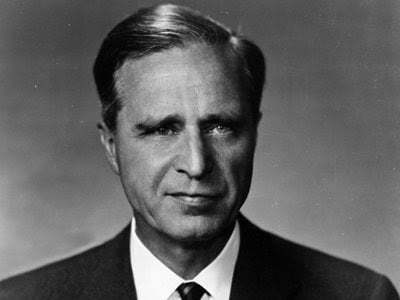 The granddad of President Bush Junior was Prescott Bush. In other words the granddad of George W Bush was the director of the Union Banking Corporation, Brown Brothers Harriman, which in turn were partners with Thyssen Stahl, a major German conglomerate involved in the weapons industry of the Third Reich. And this has been reasonably well documented.
The granddad of President Bush Junior was Prescott Bush. In other words the granddad of George W Bush was the director of the Union Banking Corporation, Brown Brothers Harriman, which in turn were partners with Thyssen Stahl, a major German conglomerate involved in the weapons industry of the Third Reich. And this has been reasonably well documented.
The United States continued to collaborate with Nazi Germany after September 1939. And after December 1941, namely Pearl Harbor, the US joined the allies, declared war on Japan, Germany and Italy. And there was a formal shift with regard to Nazi Germany. The Roosevelt administration adopted “Trading With The Enemy” legislation, In other words Washington took an official stance in support of its allies against Nazi Germany. But unofficially they continued collaborating with Nazi Germany.
Text box. The Bush Family and Nazi Germany, “Sleeping with the Enemy”
Prescott Bush was a partner of Brown Brothers Harriman & Co and director of Union Banking Corporation which had close relations with German corporate interests including Thyssen Steel, a major company involved in the Third Reich’s weapons industry.
“…[N]ew documents, declassified [in 2003], show that even after America had entered the war [December 8, 1941] and when there was already significant information about the Nazis’ plans and policies, he [Prescott Bush] worked for and profited from companies closely involved with the very German businesses that financed Hitler’s rise to power. It has also been suggested that the money he made from these dealings helped to establish the Bush family fortune and set up its political dynasty” (The Guardian, September 25, 2004)
In August 1934, American “Standard oil” in Germany acquired 730,000 acres of land and built large oil refineries that supplied the Nazis with oil. At the same time, Germany secretly took delivery of the most modern equipment for aircraft factories from the United States, which would begin the production of German planes.
Germany received a large number of military patents from American firms Pratt and Whitney”, “Douglas”, “Curtis Wright”, and American technology was building the “Junkers-87”. In 1941, when the Second world war was raging, American investments in the economy of Germany amounted to $475 million. “Standard oil” invested – 120 million, “General motors” – $35 million, ITT — $30 million, and “Ford” — $17.5 million. (emphasis added)
Standard Oil Was Selling Oil to the Third Reich
M.C: Invariably neglected by historian and journalists, there’s a something which is absolutely crucial to an understanding of WWII: Germany did not have any petrol, fuel – it had very limited supplies of petrol.
This is documented in the book by Jacques Pauwels, a prominent Canadian historian. Pauwels analyses the relationship between Standard Oil, which was owned by the Rockefeller family and the Nazi regime.
Standard Oil was the largest oil producer Worldwide. It controlled the oil industry, and Nazi Germany was dependent on oil.
And that oil was sold to Nazi Germany directly up until Pearl Harbor in December 1941, and subsequently it was sold via third countries indirectly, to bypass the “Trading With The Enemy Act” which was passed in the US Senate.
Well, in fact it was a previous legislation [1917] but nonetheless, it’s worth noting that the Bush family’s assets were confiscated under the “Trading with Enemy” legislation.
M.C.: (Cont) But as far as Standard Oil was concerned, they continued selling oil to Nazi Germany up until 1944-1945.
And the Roosevelt administration turned a blind eye.
And the main reason for this was that without the oil supplies from Standard Oil, Nazi Germany could not under any circumstances have waged war on the Soviet Union, and in fact, even the Western Front would have been compromised.
So that the sale of US oil by Standard Oil to the Third Reich was crucial. The US was sleeping with the enemy. Unofficially the US was a de facto “ally” of Nazi Germany. There were no sanctions imposed on the Third Reich: After Pearl Harbor (December 1941) US oil was sold to the enemy through third countries, and then there was a large component of Standard Oil’s shipments which was sold out of Venezuela.
Operation Barbarossa was launched in June 1941 by Nazi Germany against the Soviet Union. It resulted in 26 million deaths.
It was understood that the Third Reich would be getting oil from the United States.
The Nazis were staunch military planners, and prior to launching Operation Barbarossa they ensured that they would have regular supplies of oil provided by Standard Oil.
Without US oil, they could not under any circumstances have waged war on the Soviet Union.
Text Box. The Unspoken Question. Where did Germany get its oil from?
Prior the December 1941, Texas oil was shipped on a regular basis to Nazi Germany.
While Germany was able to transform coal into fuel, this synthetic production was insufficient. Moreover, Romania’s Ploesti oil resources (under Nazi control until 1944) were minimal. Nazi Germany largely depended on oil shipments from US Standard Oil.
The Attack on Pearl Harbor (December 7, 1941) occurred barely six months after the launching of Operation Barbarossa (July 1941). The United States enters World War II, declaring war on Japan and the axis countries.
Trading with the Enemy legislation (1917) officially implemented  following America’s entry into World War II did not prevent Standard Oil of New Jersey from selling oil to Nazi Germany. This despite the Senate 1942 investigation of US Standard Oil.
following America’s entry into World War II did not prevent Standard Oil of New Jersey from selling oil to Nazi Germany. This despite the Senate 1942 investigation of US Standard Oil.
While direct US oil shipments were curtailed, Standard Oil would sell US oil through third countries. US oil was shipped to occupied France through Switzerland, and from France it was shipped to Germany:
“… for the duration of the Second World War, Standard Oil, under deals Teagle had overseen, continued to supply Nazi Germany with oil. The shipments went through Spain, Vichy France’s colonies in the West Indies, and Switzerland.”
It should be noted that a large share of Nazi Germany’s oil requirements was met by shipments out of Venezuela which at the time was a de facto US colony.
Venezuela’s US sponsored (War-time) president General Isaías Medina Angarita (May 1941 – October 1945) was there to protect US oil interests as well as “trade with the enemy” from the onset of America’s entry into World War II in December 1941:
John D. Rockefeller Jr. owned a controlling interest in the Standard Oil corporation, but the next largest stockholder was the German chemical company I. G. Farben, through which the firm sold $20 million worth of gasoline and lubricants to the Nazis. And the Venezuelan branch of that company sent 13,000 tons of crude oil to Germany each month, which the Third Reich’s robust chemical industry immediately converted into gasoline.
While Medina Angarita’s government pressured by Washington in the immediate wake of Pearl Harbor (December 7, 1941) remained officially neutral (de facto aligned with the US, while breaking its relations with Nazi Germany), oil shipments out of Venezuela to Germany were not discontinued. In a rather unusual twist (bordering on ridicule) Venezuela declared war on Germany in February 1945, when the war was almost over.
Without those oil shipments instrumented by Standard Oil and the Rockefellers, Nazi Germany would not have been able to implement its military agenda. Without fuel, the Third Reich’s eastern front under Operation Barbarossa would most probably not have taken place, saving millions of lives. The Western front including the military occupation of France, Belgium and The Netherlands would no doubt also have been affected.
M.C: The Franklin D. Roosevelt administration could have adopted severe sanctions against Standard Oil with a view to enforcing a blockade against Nazi Germany.
The US was not committed to peace: Washington’s unspoken objective was not only to destroy the Soviet Union, it also consisted in undermining Britain’s role as an imperial power.
Let us be under no illusions. Without the oil shipments instrumented by US Standard Oil and its subsidiaries, Nazi Germany’s imperial design could not have been undertaken.
It should be noted that the role of the US in supplying Nazi Germany with oil is casually ignored. Today’s Western “consensus” which was upheld by the European Parliament is to blame Nazi Germany and the Soviet Union for WWII.
GR: Professor Chossudovsky, you said quite a bit there. Could you maybe just share with our listeners some of the key source documents that you used for your research that informed your analysis?
MC: Well, you know, from a historical standpoint, this US-Third Reich “alliance” was not clear in my mind, it was blurred. Moreover, with some exceptions it was not the object of (mainstream) scholarly research.
What I did was to indulge in what might be called common sense analysis. In this regard, I think that Jacques Pauwels book on World War II, is absolutely fundamental.
Common sense analysis tells us the following: you cannot wage a large scale military campaign without fuel.
Without the steady supply of fuel to Nazi Germany from Standard oil, the history of WWII would have been totally different. Operation Barbarossa would most probably not have occurred.
But then, there’s another element which I mentioned earlier with regard to the British Empire. War Plan Red against the British Empire was put on hold in 1939. But it was never abandoned.
From 1939 onwards, from a geopolitical standpoint, America’s unspoken hegemonic objective was to weaken all competing imperial powers including the British empire.
In other words, weaken Britain, France, Italy, Germany, Belgium and Holland as well as Japan. All these countries had colonial possessions. And in the wake of World War II, Europe had been destroyed and the US economy was booming.
In the course of the post-war era, these colonial possessions (e.g. Vietnam, Indonesia, Cambodia) were taken over, integrated into America’s sphere of influence.
The two historic objectives of the United States in World War II were
1) to undermine the British Empire and competing imperial powers,
2) destroy the Soviet Union,
Secret Plan to Wage Nuclear War on the Soviet Union Formulated during WWII
There was a secret plan first formulated in 1942 confirmed by declassified September 15, 1945 documents, that the United States was intent upon waging a nuclear war against the Soviet Union.
Two atomic bombs were dropped respectively on Hiroshima and Nagasaki under President Truman (6 and 9 August 1945), and we know that in the first few minutes of that bombing of Hiroshima, a hundred thousand people were killed, and the same thing occurred with regard to Nagasaki.
These cities were totally destroyed, leading also to extensive nuclear radiation.
But what most people don’t know, is that on the 15th of September 1945, declassified documents from the U.S. war department pointed unequivocally to a detailed US plan to bomb 66 cities of the Soviet Union – with over 200 atomic bombs.
Some historians might have concluded: Hiroshima and Nagasaki were dress rehearsals for this devastating project directed against 66 Soviet cities. Now, I think this is significant because this project was formulated when the Soviet Union and the United States were allies theoretically against Nazi Germany.
But in fact 20th Century history, I think, has to be looked at very carefully.
US oil for Nazi Germany’s motorized convoys of tanks and armored cars, its Luftwaffe planes was part of America’s plan to destroy the Soviet Union. It resulted in the loss of 26 million lives.
Another related plan consisted in Wiping the Soviet Union off the Map, by dropping of more than 200 atomic bombs on 66 Soviet cities. This project was tantamount to the planning of genocide.
Now, that project did not take place because the Soviet Union had information on this plan first formulated in 1942 and they were in the process of developing their own weapons system.
But what I’m saying is that the arms race did not start with the Cold War. The arms race started with the Manhattan Project (launched in 1939) which consisted in building nuclear weapons capabilities in the United States. And Canada, incidentally, was a partner in that project. And so was Britain.
Essentially what we’re looking at is a broader perspective of how the United States de facto supported Nazi Germany with a view to
a) destroying the Soviet Union,
b) weakening the British Empire and competing empires including of course France, Belgium, Holland, Italy, etc and so on, (Those countries virtually are no longer colonial powers).
Intermission
Part Two
GR: Another aspect of U.S. hegemony, as you put it, is also the economic dimension. We spoke with Michael Hudson a few months back and, you know, he mentioned the use of the U.S. dollar in maintaining their control and financing their war agenda.
So, could you speak to the point of the use of the U.S. dollar, and the way that’s been used to maintain America’s hegemonic role – the way they’ve been able to use the creation of these institutions like the World Trade Organization, the World Bank, and just the U.S. dollar as the currency – the world’s petro-currency?
US Dollar Hegemony
MC: Well, you know, this goes back to the Bretton Woods agreement of 1944, where there was a decision which was virtually imposed in the post-war era, to establish the U.S. dollar as the international currency. And linked up to gold and then subsequently the gold standard was dropped.
This dollarization of the post World War II economy went through several stages. It eventually led to the World Bank and the IMF playing a pro-active role in countries which were former colonies of the Western European powers: Sub-Saharan Africa, Southeast Asia, and of course Latin America – in other words, these were so-called ‘developing countries.’
But again it’s the Washington Consensus, it’s the World Bank, the IMF which became instruments leading to the consolidation of U.S. hegemony, namely U.S. dollar hegemony.
And definitely that is really, in a sense, an outcome of World War II where all the competing imperial powers are ultimately destroyed. Well, they’re no longer competing powers and I’m talking about Italy, France, Britain, Belgium, Holland, and of course Germany.
That whole structure has been ultimately flattened, and many of the so-called developing countries – territories of these former colonial powers– are now within the U.S. sphere of influence.
And the dollar is their proxy currency.
So, it’s a structure of domination and hegemony using currency markets, economic policy conditionalities, control of wages, control of prices, and so on.
And then it’s also the whole process of relocation of industrial activity to cheap labour economies. And many of those cheap labour economies are the former colonies of the Western Powers.
GR: Now, there’s the fall of the Berlin Wall, and so the Soviet Union is no more.
And then we have entered into a new phase, but the United States and its NATO allies continue to advance towards the border of Russia.
we’re at the point where US-NATO is threatening Russia,
Moreover, since 2001 the US is waging a ‘Global War on Terrorism’. It’s the post 9/11 period.
So, does this signify an important course change, and how does that relate to this ongoing effort to supplant the British Empire?
MC: Well, I mean, in the wake of World War II NATO is established in 1949.
It’s the seventieth anniversary of NATO so to speak. And it’s the shift into the Cold War. Now NATO was actually established (April 1949) barely a few months before the founding of the Peoples Republic of China (PRC) on October 1st 1949. And consistently of course, NATO has been targeting the Soviet Union on behalf of the Pentagon.
The United States has been the main power in sustaining the Cold War up until its “official end” in 1989.
But in effect, the Cold War is not over. While the Soviet Union no longer exists, US-NATO is now directing its threats against the Russian Federation (which is bona fide capitalist country).
Again, it’s part of a hegemonic project, not by the NATO member states but of the United States which controls NATO via the Pentagon.
And I think that the whole process of militarization after World War II with the establishment of the geographic command structures – the U.S. Central Command, U.S. Africa Command, U.S. Pacific Command, etc – hundreds of military bases around the world.
US Geographic Commands
And largely, well, they’re not only there threatening Russia, they’re threatening China.
And these bases are also there as a means to enforcing america’s sphere of influence, i.e. colonize regions which were formerly colonies of European countries.
In Southeast Asia, of course, what is very important are the strategic waterways.
Indonesia is a de-facto within the U.S. zone of influence and various other countries as well.
And so, it’s a process of global militarization in each of the major regions of the world.
This new hegemony in the wake of the Cold War is also characterized by various modes of interference in the affairs of sovereign states through military dictatorships in Latin America, regime change, engineered protest movements, sanctions, meddling in national elections, and so on.
It’s the whole gamut of military might which of course supports U.S. economic and financial interests in different parts of the world.
And it’s not strictly in the context of Eastern Europe. It’s also in Central Asia, it’s in the South China Sea, the Taiwan Strait,
And in the present structure we now have a situation where the Russian Federation and China are allies under the Shanghai Cooperation Organization (SCO), which ultimately constitutes a powerful countervailing bloc in relation to U.S. hegemony, particularly in the Asian context.
GR: Most people understand there was a great deal of enmity between the United States and the British Empire in the late 18th century and early 19th century. But over the course of the last couple of centuries, one would think that, well, maybe they’ve changed their ways. I mean the United States is more of a partnership with the United Kingdom, as opposed to looking to supplant them as the dominant empire.
Could you maybe take on that idea, i.e. that there’s no interest in a partnership? Because there’s certainly been a lot of partnership in all of these military adventures we’ve seen since the second world war, but what indications are there that the objective of supplanting of the British Empire is still in effect?
MC: Well, you know, the world is characterized by what I would call cross-cutting coalitions. You can be friends in the area of diplomacy and politics, and then enemies in financial affairs. We can see the situation with regard to the relationship between, let’s say, the United States and Turkey, or Turkey and NATO. Turkey is an ally now of Russia, but it’s still part of the North Atlantic Treaty Organization.
With regard to Britain and the United States – there are many cross-cutting relations. Britain is still Europe’s main financial market, and the City of London is considered one of the major financial centres in the world. And there are links between British and American firms. And there are links also with other European countries.
But, I think there’s something quite specific. Today, while the United Kingdon aligns itself with the United States, they are subordinate to the US.
And I don’t think British governments have any intention of restoring the British Empire, because, apart from the Commonwealth, it is more or less defunct – it doesn’t exist anymore.
But, on the other hand, it’s important to point out that in all recent wars, Britain has faithfully participated in an Anglo-American alliance, both with regard to Afghanistan, as well as, of course, with regard to Iraq during the Gulf War (1991) as well as in 2003. It was marked by The Bush-Tony Blair relationship.
In that regard, there is, of course, a very cohesive and corrupt alliance.
But when you look at the hegemonic objectives of the United States, you realize that what’s happening today in the United Kingdom is the appointment under PM Boris Johnson of a U.S. proxy regime.
GR: Could you explain that a little bit?
MC: It’s something which is not so straighforward to explain. I should mention there are other cases of proxy governments in Western Europe, particularly in France and Germany.
But what this means is that essentially the United States is intent upon taking over the European landscape.
And in one form or another it has done that since the end of World War II, simply by the fact that there are U.S. military bases in several European countries, and they have NATO and they control NATO.
But in the case of Britain, we must understand that the UK has never been part of the Eurozone. And there’s a reason for that, and it has to do with U.S.- U.K. relations in terms of financial institutions, markets, and so on.
But more recently, there have been UK-US negotiations pertaining to trade and investment, etc. the details of which haven’t really emerged. Negotiations between Boris Johnson and the Trump administration, let’s say, with regards to macro-economic policy, specifically the privatization of health services.
In other words, what the U.S. is pushing for is the neoliberal restructuring of Britain, extensive privatization, repeal of the welfare state, something which was built in the post World War II era, namely socio-democracy. And which has nothing to do with British colonialism.
It had to do with the fact that, at one point, the British people pushed towards the development of social programs, education and so on.
And I think that what is happening now is that we have a government which ultimately is not representative of the British people. It has become an instrument of dominant U.S. hegemonic interests, as well as a continuation of a fragile Anglo-American partnership dominated by Washington.
So that, I think that is the endgame. The destabilization of Britain as a nation state.
That destabilization is engineered by the Washington Consensus.
If we look at the evolution of the British Empire from Queen Victoria at the end of the nineteenth century to the present, US hegemony ultimately prevails, The endgame of Britain’s imperial ambitions is economic and political chaos under Brexit.
GR: Yeah…
MC: …It’s not that Brexit per se is the issue. It’s the fact that a proxy government has been installed. It’s a corrupt government. It’s manipulated by financial interests and it is ultimately leading Britain, the former British Empire into a total political impasse.
Intermission
Part Three
GR: Professor Chossudovsky, you brought up Brexit there just now, and I just want to get some clarification. Does Brexit ultimately serve U.S. goals or was it just a means by which a certain kind of proxy, as you say, would get elected?
MC: Well, I think the broader US objective is to create instability across the European landscape. It serves U.S. interests because it cuts Britain off from the European Union. But it also defines a whole series of trade agreements, and so on, which are to benefit the United States. (i.e. US financial interests).
The irony is that U.S. expansionism and hegemony feeds on creating and disrupting both national and local economies. The result is economic and social destabilization.
US sponsored neoliberal reforms destabilize the national economy and create social divisions. (For instance the divisions created in EU member states). the nation state becomes fragmented. (eg. Yugoslavia and Czechoslovakia are broken up). You create divisions within national societies.
At the same time, the War on Terrorism is used, of course, to weaken the fabric of Western European countries: it triggers the refugee crisis. The latter is marked by people fleeing the war theatres in Syria, or Iraq, or elsewhere. The refugee crisis is the direct result of U.S. military aggression, whether it’s direct military action or whether it is the result of US sponsored terrorist insurgencies.
The whole European landscape now is in crisis politically, socially. And this is also the consequence of U.S. led wars in the Middle East.
But it is also the result of neoliberal policies which are now much more generalized, and which are now being applied in many Western countries.
And inevitably, when you start adopting neoliberal policy in a country like the United Kingdom, you destroy the whole fabric of the welfare state. That’s ultimately the objective.
GR: Professor Chossudovsky we’re going to have to bring the interview to a close shortly, but I wanted to ask one more question about the fact that when these plans – this hegemonic agenda – originated in the 19th century, the U.S. was ascendant, and now it would seem that today and for a couple of decades now, the U.S. has been on the decline with China apparently – appearing to be on the rise and forming partnerships with Russia and other countries. So, how do you see this – I mean, is this agenda of imperial dominance going to fall apart, given the immense debts that the U.S. has racked up, and the inability to sell U.S. Treasury bonds as they have in the past. How do you see this proceeding? Is the U.S. hegemon going to succeed or is it destined to fail?
MC: Well, you know, it has a lot to do with the sources of money wealth. And it’s the growth of speculative activities, the hedge funds, the deregulation of banking during the Clinton administration and the fact that now you can make money without necessarily producing anything.
And you can speculate.
And the various corrupt forms of wealth creation within the financial system are ultimately to the detriment of the real economy.
Then, there’s the whole issue of delocation. And, in effect, what we’ve seen now in the United States is that certain industries are simply being wiped out – and it’s true also in Canada and Western Europe.
And they’ve been delocated to Southeast Asia or even to China for that matter, to cheap labour havens in Southeast Asia.
But at the same time the implementation of these austerity measures, coupled with very large military budgets is leading to the collapse of America’s economic infrastructure.
So the real economy is in crisis. In the core of the US Empire, there’s a large share of the U.S. population which don’t even meet minimum food requirements.
It’s a situation of impoverishment of the richest country on the planet.
And that has a lot to do with the way the US imperial apparatus functions. You delocate everything with a view to paying $150 a month to workers in Southeast Asia, which then leads to people loosing their jobs on assembly lines in North America and so on, And ultimately then this leads to unemployment and the collapse in purchasing power and the downfall of economic activity, not to mention rising food prices. But also concurrently the whole infrastructure of the U.S. economy is in crisis.
And I suspect that this is going to backlash because the Empire is no longer in a position to assert its hegemony in relation to real economic activity.
And the levels of consumer demand have collapsed because of the process of off-shoring of jobs, which create unemployment.
We might make a comparison with the Roman Empire. At one point, in the history of the Roman Empire, the use of slave labor contributed to destroying the independent small scale handicraft economy as well as farming. With the extension of the slave labor economy, the levels of consumer demand simply collapsed, and the whole productive and trading structure went into crisis.
Well, we’re living that, in a sense. We delocate industrial activity to an overseas cheap labour economy with exceedingly low wages (from $100 and $300 a month), and then we close down our factories here.
And then we cut all social expenditures with a view to funding the military industrial complex with large scale investments now of the order of $1.3 trillion for an absolutely useless nuclear weapons program: the only use for that program is to blow up the planet.
Meanwhile, the media tell us that that “nuclear weapons make the World safer”.
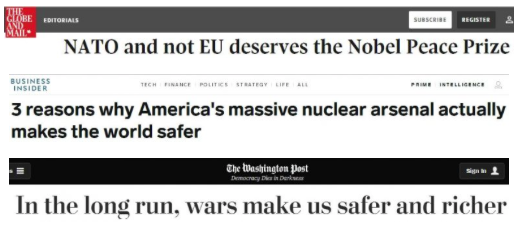
This hegemonic project seeks to minimize wages at a global level. In the central core of the US Empire: America, has a declining standard of living, it has high levels of illiteracy, it has poverty, racism alongside a thriving luxury good economy for a small sector of the population.
And those social conditions in the heart of the Empire are exacerbated by the thrust of America’s hegemonic objectives in different parts of the world including the ‘profit driven” global cheap labor economy.
The Globalization of War: America’s “Long War” against Humanity
Michel Chossudovsky
The “globalization of war” is a hegemonic project. Major military and covert intelligence operations are being undertaken simultaneously in the Middle East, Eastern Europe, sub-Saharan Africa, Central Asia and the Far East. The U.S. military agenda combines both major theater operations as well as covert actions geared towards destabilizing sovereign states.
- ISBN Number: 978-0-9737147-6-0
- Year: 2015
- Pages: 240 Pages
List Price: $22.95
Special Price: $15.00
The Global Research News Hour airs every Friday at 1pm CT on CKUW 95.9FM out of the University of Winnipeg. The programme is also podcast at globalresearch.ca .
The Global Research News Hour now airs Fridays at 6pm PST, 8pm CST and 9pm EST on Alternative Current Radio (alternativecurrentradio.com)
Community Radio Stations carrying the Global Research News Hour:
CHLY 101.7fm in Nanaimo, B.C – Thursdays at 1pm PT
Port Perry Radio in Port Perry, Ontario –1 Thursdays at 1pm ET
Burnaby Radio Station CJSF out of Simon Fraser University. 90.1FM to most of Greater Vancouver, from Langley to Point Grey and from the North Shore to the US Border.
It is also available on 93.9 FM cable in the communities of SFU, Burnaby, New Westminister, Coquitlam, Port Coquitlam, Port Moody, Surrey and Delta, in British Columbia, Canada. – Tune in at its new time – Wednesdays at 4pm PT.
Radio station CFUV 101.9FM based at the University of Victoria airs the Global Research News Hour every Sunday from 7 to 8am PT.
CORTES COMMUNITY RADIO CKTZ 89.5 out of Manson’s Landing, B.C airs the show Tuesday mornings at 10am Pacific time.
Cowichan Valley Community Radio CICV 98.7 FM serving the Cowichan Lake area of Vancouver Island, BC airs the program Thursdays at 6am pacific time.
Campus and community radio CFMH 107.3fm in Saint John, N.B. airs the Global Research News Hour Fridays at 10am.
Caper Radio CJBU 107.3FM in Sydney, Cape Breton, Nova Scotia airs the Global Research News Hour starting Wednesday Morning from 8:00 to 9:00am. Find more details at www.caperradio.ca
RIOT RADIO, the visual radio station based out of Durham College in Oshawa, Ontario has begun airing the Global Research News Hour on an occasional basis. Tune in at dcstudentsinc.ca/services/riot-radio/
Radio Fanshawe: Fanshawe’s 106.9 The X (CIXX-FM) out of London, Ontario airs the Global Research News Hour Sundays at 6am with an encore at 3pm.
Los Angeles, California based Thepowerofvoices.com airs the Global Research News Hour every Monday from 6-7pm Pacific time.
Notes:
1) Worthington, Chauncey Ford (2001). Writings of John Quincy Adams(vol. VII). Boston, Massachusetts. p. 372.
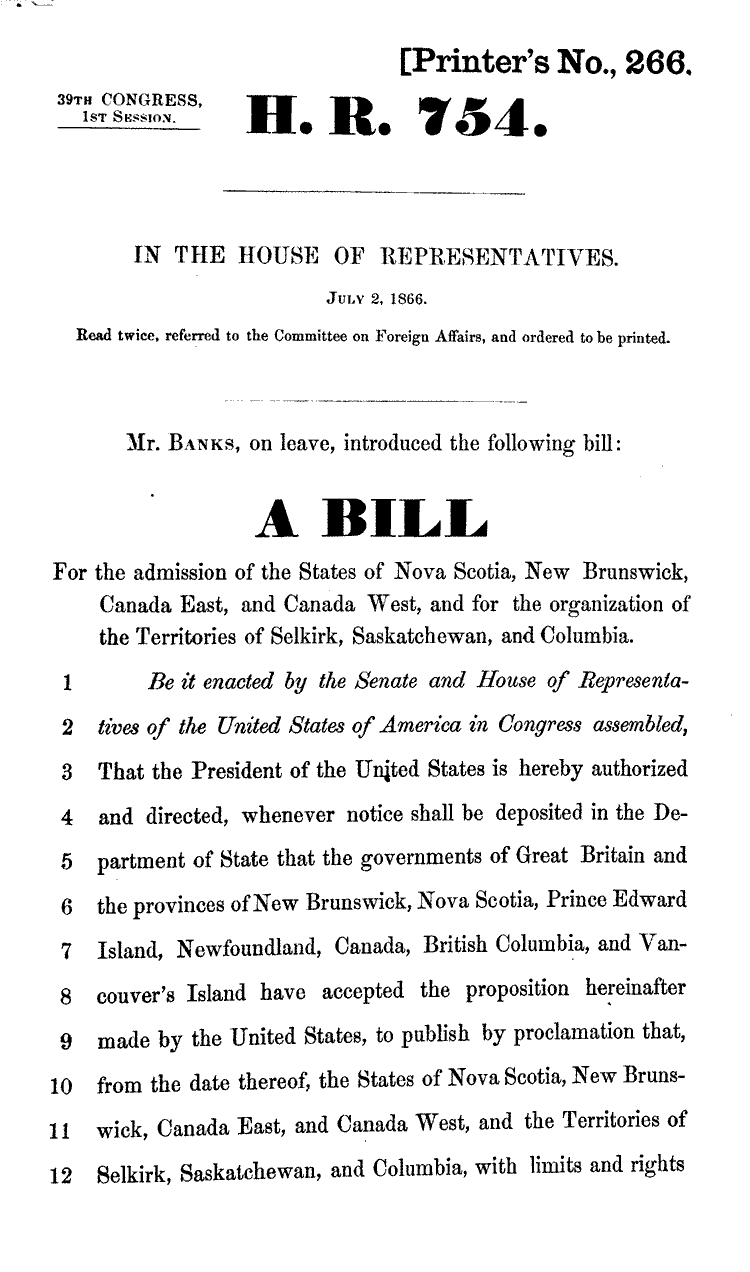
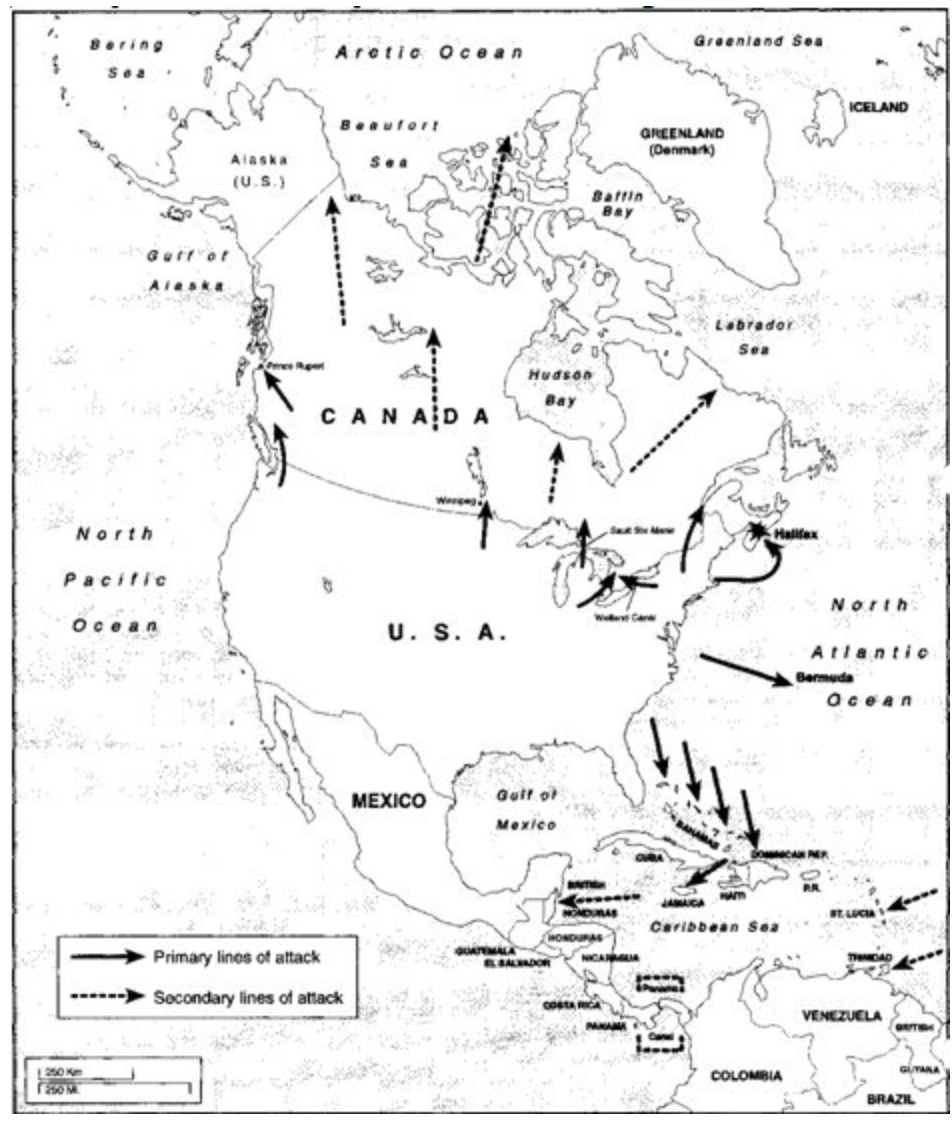
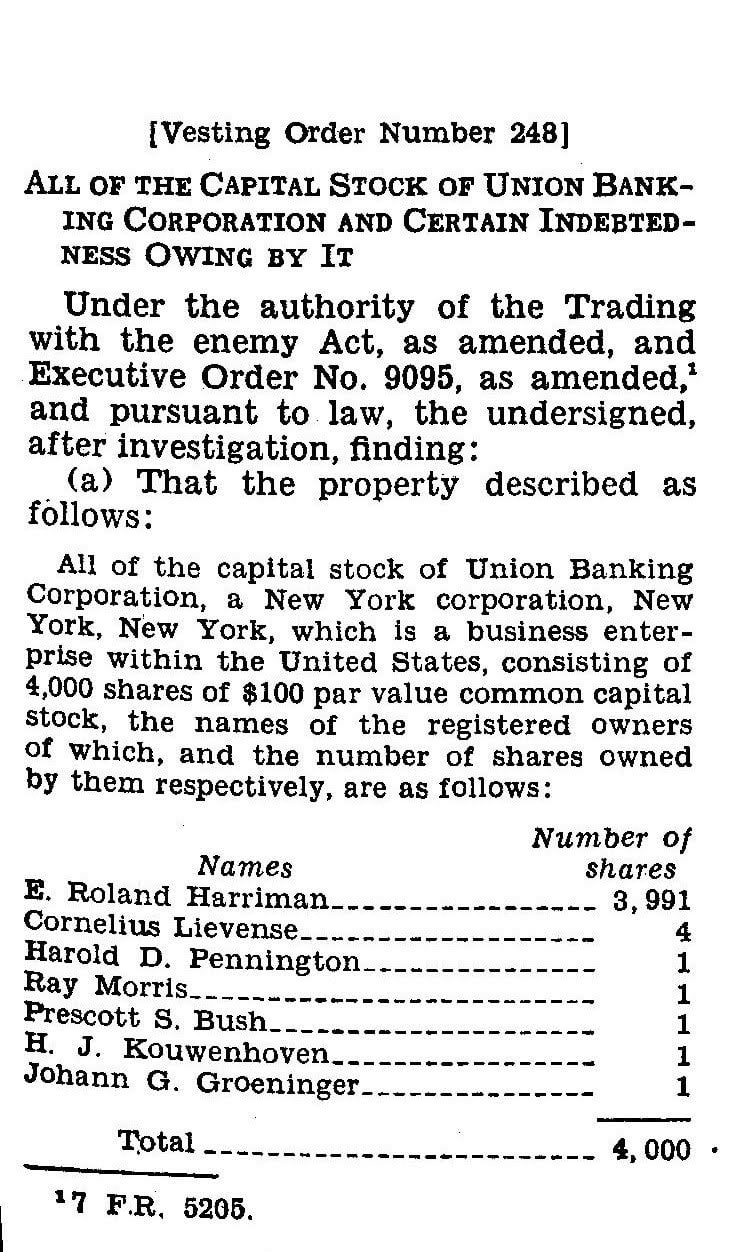
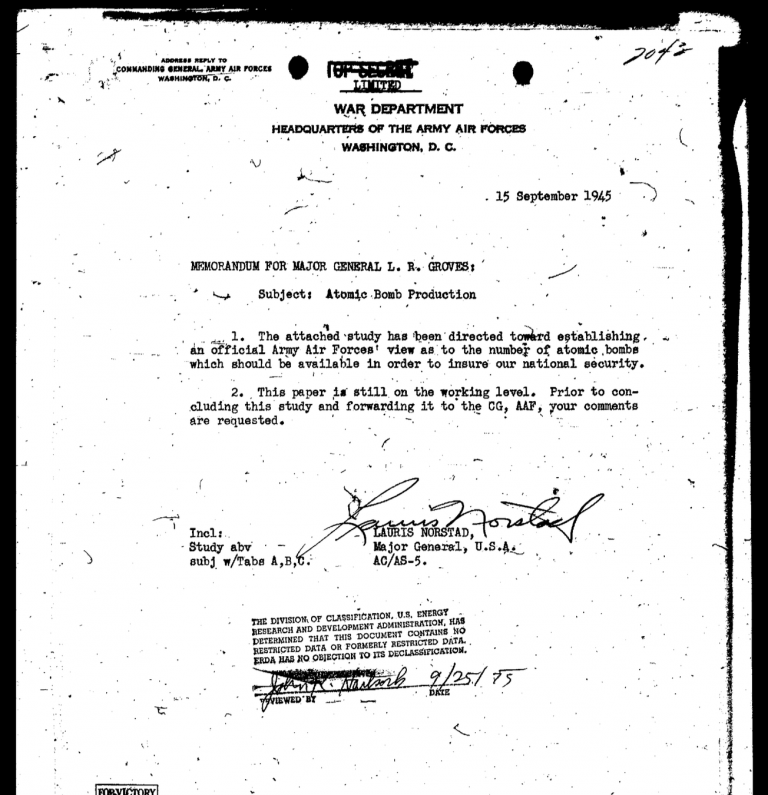
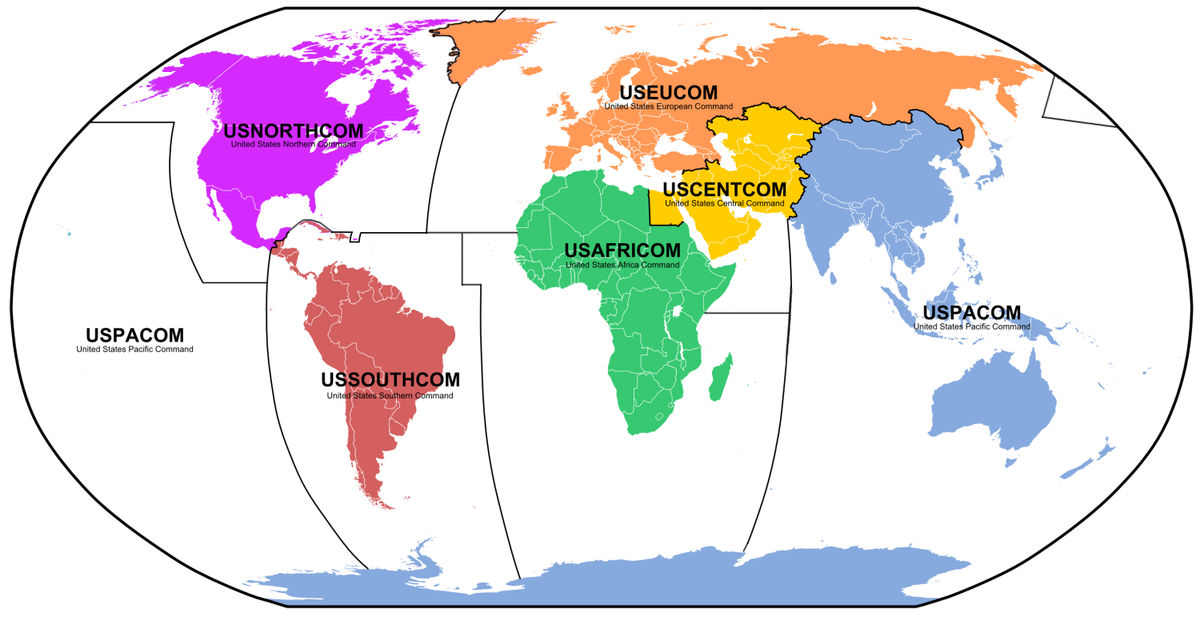




/cdn.vox-cdn.com/uploads/chorus_asset/file/22660826/Jun_15_2021_15_48_10.gif)
/cdn.vox-cdn.com/uploads/chorus_asset/file/22660830/Jun_15_2021_15_51_22.gif)

















